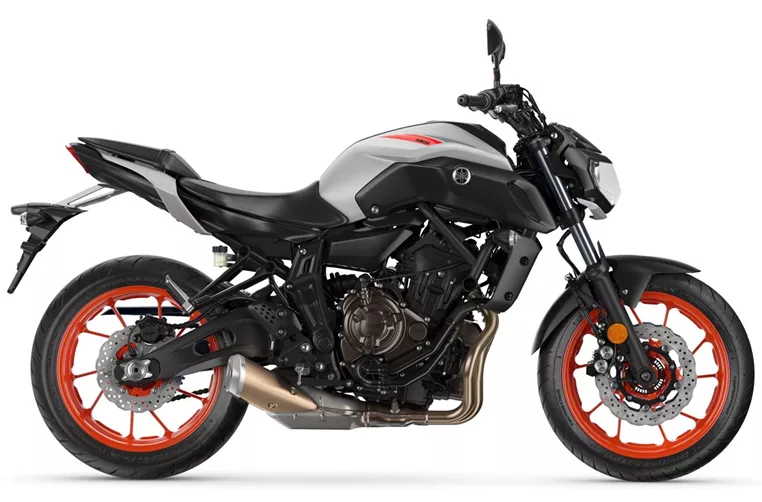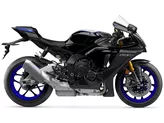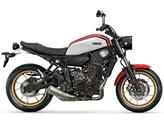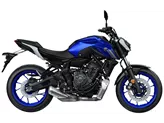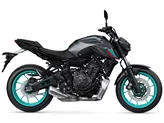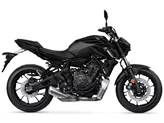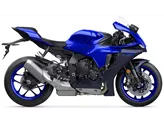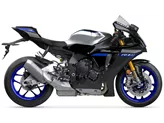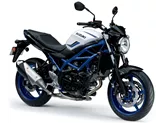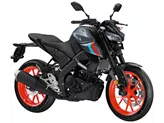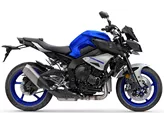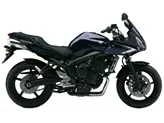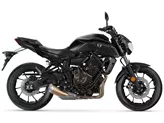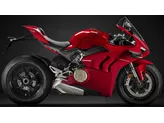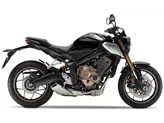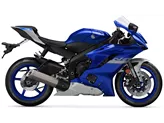Yamaha R1 2018 vs. Yamaha MT-07 2020

Yamaha R1 2018
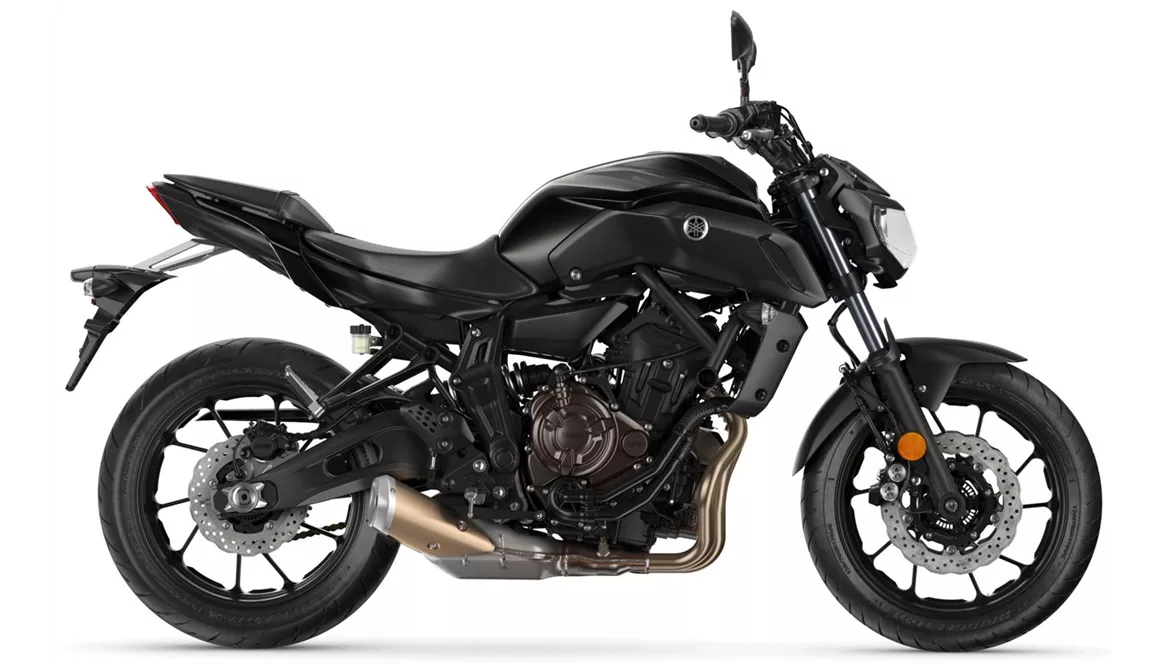
Yamaha MT-07 2020
Vue d’ensemble - Yamaha R1 2018 vs Yamaha MT-07 2020
The Yamaha R1 model year 2018 and the Yamaha MT-07 model year 2020 are two distinct motorcycles that cater to different riding preferences and styles.
Starting with the Yamaha R1 2018, it is a supersport bike known for its high-performance capabilities. It is equipped with a powerful engine that boasts a bore of 79 mm and a stroke of 50.9 mm, resulting in an impressive engine power of 200 HP and a torque of 112.4 Nm. The R1 features a 998ccm displacement, four cylinders, and four valves per cylinder with DOHC technology. It also has a high compression ratio of 13.
In terms of suspension, the R1 is equipped with an Upside-Down telescopic fork in the front, providing excellent stability and control. The chassis is made of aluminum, which enhances the bike's agility and maneuverability. The braking system consists of double disk brakes in the front, ensuring efficient and reliable stopping power.
The dimensions and weights of the R1 include a front tire width of 120 mm and a diameter of 17 inches, while the rear tire has a width of 190 mm and a diameter of 17 inches. The wheelbase measures 1405 mm, and the seat height is 855 mm. The R1 has a kerb weight of 199 kg, including ABS, and a fuel tank capacity of 17 liters.
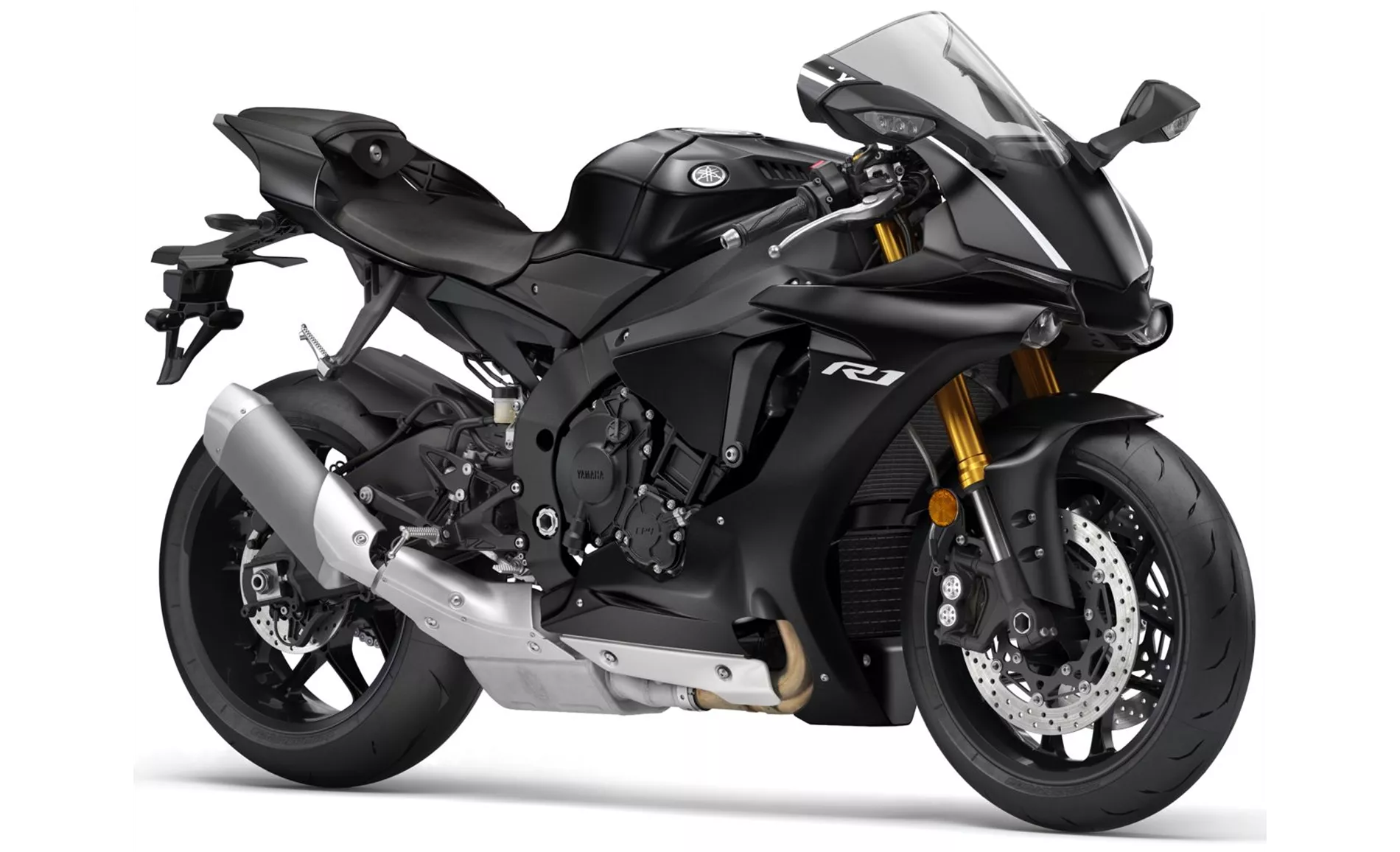
Yamaha R1 2018
The Yamaha R1 2018 has several strengths, including its rev-happy engine, great sound, and terrific handling. Despite its compact and radical design, it offers comfortable seating. The bike is equipped with high-quality electronic equipment and features high-quality components manufactured using modern methods.
However, the R1 does have a weakness in that it requires an agile driving style, as it is not designed for casual, comfortable cruising.
On the other hand, the Yamaha MT-07 2020 is a naked bike that focuses on a balance between performance and practicality. It is powered by a high-torque two-cylinder engine with a bore of 80 mm and a stroke of 68.6 mm, resulting in an engine power of 75 HP and a torque of 68 Nm. The MT-07 has a displacement of 689ccm, two cylinders, and four valves per cylinder with DOHC technology. It has a compression ratio of 11.5.
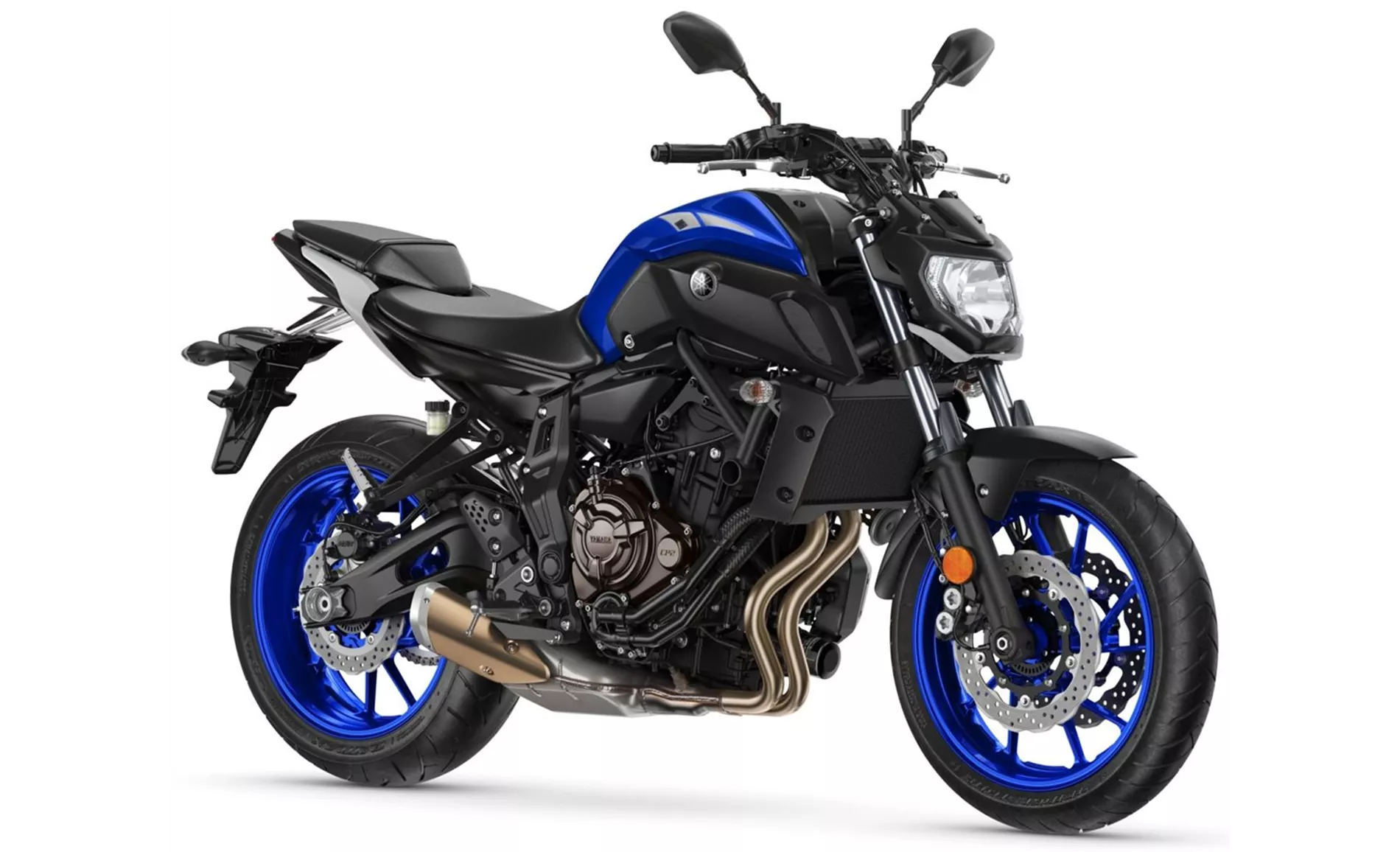
Yamaha MT-07 2020
The MT-07 features a telescopic fork in the front for suspension, providing a well-done chassis set-up that offers a comfortable and enjoyable riding experience. The frame is made of steel, ensuring durability and stability. The braking system consists of double disk brakes in the front, offering reliable stopping power.
In terms of dimensions and weights, the MT-07 has a front tire width of 120 mm and a diameter of 17 inches, while the rear tire has a width of 180 mm and a diameter of 17 inches. The wheelbase measures 1400 mm, and the seat height is 805 mm. The MT-07 has a kerb weight of 182 kg, including ABS, and a fuel tank capacity of 14 liters.
The strengths of the MT-07 include its easy-to-ride nature, pleasant seating position, and a wide selection of accessories available. It also offers a good price-performance ratio. However, the bike's optics and fittings may appear less visually appealing compared to other models, and some riders may find the controls on the handlebars to be of lower quality.
In conclusion, the Yamaha R1 2018 and the Yamaha MT-07 2020 are two motorcycles that cater to different riding preferences. The R1 excels in high-performance capabilities, with its powerful engine and exceptional handling, while the MT-07 focuses on a balance between performance and practicality, offering a comfortable riding experience and a good price-performance ratio.
Caractéristiques techniques Yamaha R1 2018 par rapport à Yamaha MT-07 2020
Avantages et inconvénients en comparaison
Avantages et inconvénients en comparaison
Yamaha R1 2018

La Yamaha YZF-R1 est plus proche que jamais d'une machine de course. Le moteur brille par sa légèreté et son agilité. La position de conduite surprend positivement et la maniabilité est radicale mais toujours "adaptée à la masse". La machine attire immédiatement l'attention, tant par son aspect que par sa sonorité qui fait chaud au cœur. 20 ans après la première R1, elle est désormais le plus grand jalon de l'histoire de la R1.
Yamaha MT-07 2020
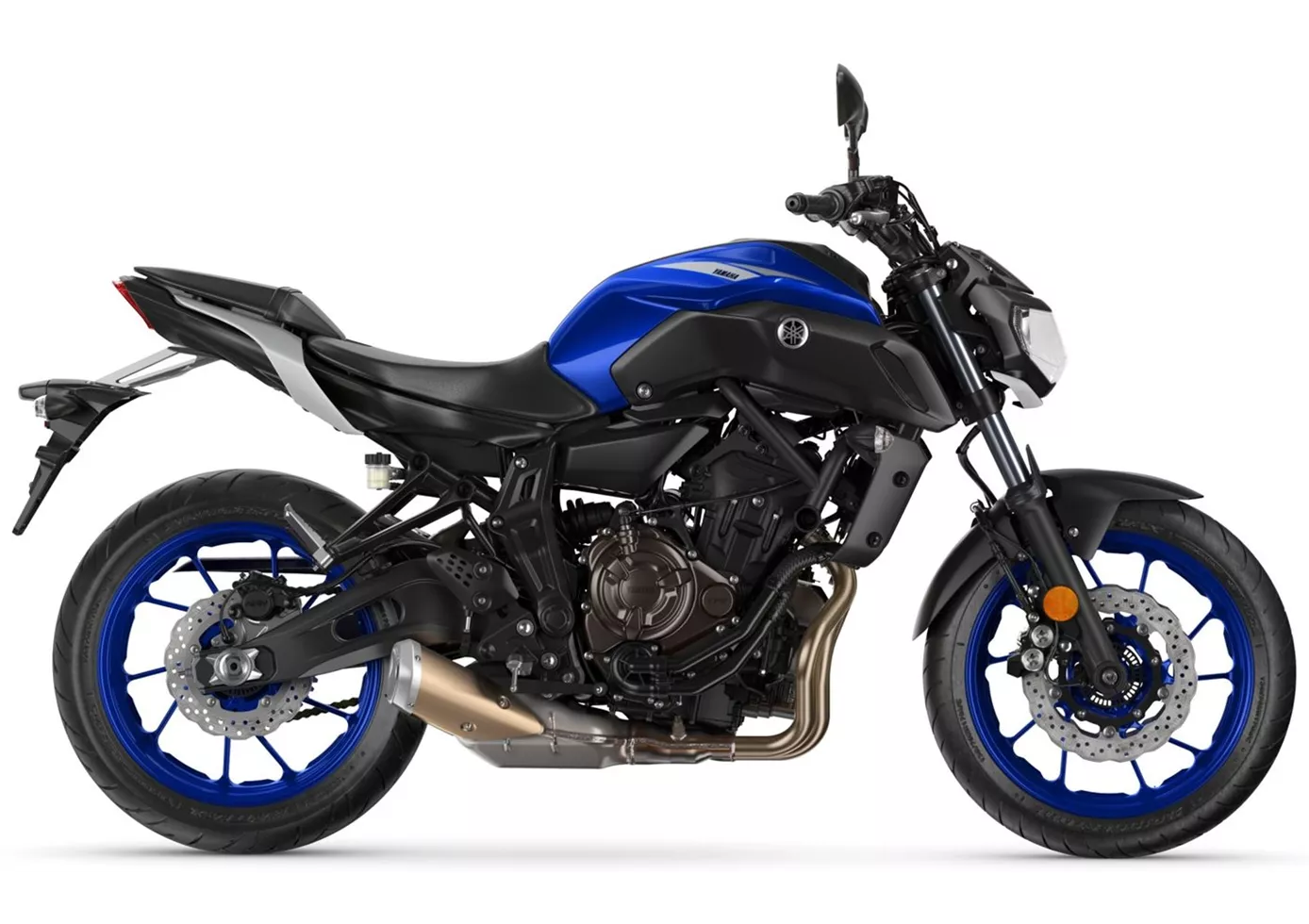
La MT-07 est une magnifique machine de plaisir qui se laisse conduire de manière extrêmement sportive. Les freins sont très puissants et le moteur est actuellement de loin le plus agile de sa catégorie - et peut-être même plus. La maniabilité légère s'y prête parfaitement et le châssis fait un compromis compréhensible entre le confort et le sport - rappelant ainsi que la MT-07 bon marché doit aussi avoir beaucoup à offrir aux débutants. Seul le design, avec son phare halogène et sa fourche conventionnelle, est déjà assez démodé.
Comparaison des prix Prix moyen du marché Yamaha R1 vs Yamaha MT-07
There are a few key differences between a Yamaha R1 2018 and a Yamaha MT-07 2020. It takes less time to sell a Yamaha R1 with 52 days compared to 69 days for a Yamaha MT-07. Since model year 2005 1000PS.de editors have written 80 reviews for the Yamaha R1 and 69 reviews for the Yamaha MT-07 since model year 2013. The first review for the Yamaha R1 was published on 4/28/2003 and now has more than 3,900 views. This compares to more than 12,600 views for the first review on Yamaha MT-07 published on 11/4/2013.

